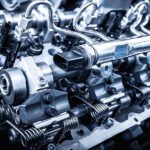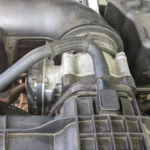
What is the Difference Between Turbo and Non-Turbo Engines?
When it comes to choosing a car, one of the key decisions you’ll need to make is whether to go for a turbocharged engine or a non-turbo engine. Understanding the difference between these two types of engines can help you make an informed choice that suits your driving needs and preferences.
What is a Turbo Engine?
A turbocharged engine, often referred to as a turbo engine, is a type of internal combustion engine that uses a turbocharger to increase its power output. A turbocharger is a device that compresses the incoming air into the engine, allowing it to burn more fuel and produce more power.
Essentially, a turbo engine uses exhaust gases to spin a turbine, which in turn drives a compressor that forces more air into the engine. This additional air allows the engine to burn more fuel, resulting in increased power and performance.
Advantages of Turbo Engines
One of the main advantages of turbo engines is their ability to deliver more power compared to non-turbo engines of the same size. This means that a smaller turbocharged engine can produce the same or even more power than a larger non-turbo engine.
Another benefit of turbo engines is their improved fuel efficiency. By using the exhaust gases to drive the turbine, turbocharged engines can extract more energy from the fuel, resulting in better fuel economy.
Turbo engines also offer better performance at higher altitudes. The turbocharger compensates for the thinner air at higher elevations by compressing it, ensuring that the engine receives an adequate amount of oxygen for combustion.
Disadvantages of Turbo Engines
While turbo engines have numerous advantages, they also come with a few drawbacks. One of the main concerns with turbo engines is their potential for increased maintenance and repair costs. The additional components, such as the turbocharger itself, can be expensive to replace if they fail.
Another disadvantage of turbo engines is the phenomenon known as turbo lag. Turbo lag refers to the delay in power delivery when the driver presses the accelerator pedal. This lag occurs because it takes a moment for the turbocharger to spool up and generate enough boost pressure.
Additionally, turbo engines tend to generate more heat, which can put additional strain on the cooling system. This increased heat production may require more frequent maintenance and cooling system checks.
What is a Non-Turbo Engine?
A non-turbo engine, also known as a naturally aspirated engine, does not use a turbocharger or any other forced induction method to increase its power output. Instead, it relies solely on the engine’s internal design and displacement to produce power.
Non-turbo engines typically have a simpler design and fewer moving parts compared to turbo engines. This simplicity often translates into lower maintenance and repair costs.
Advantages of Non-Turbo Engines
One of the main advantages of non-turbo engines is their immediate and linear power delivery. Since they do not rely on a turbocharger to generate boost pressure, non-turbo engines provide instant throttle response, making them ideal for city driving and stop-and-go traffic.
Non-turbo engines also tend to be more reliable in the long run. With fewer complex components, there are fewer potential points of failure, resulting in lower maintenance and repair costs.
Disadvantages of Non-Turbo Engines
One of the main disadvantages of non-turbo engines is their lower power output compared to turbo engines. To achieve the same level of power, a non-turbo engine often needs to be larger in size and have a higher displacement.
Non-turbo engines also tend to have lower fuel efficiency compared to turbo engines. Without the assistance of a turbocharger, non-turbo engines may need to work harder to produce the desired power, resulting in increased fuel consumption.
Conclusion
Choosing between a turbo engine and a non-turbo engine ultimately comes down to your specific driving needs and preferences. Turbo engines offer more power and better fuel efficiency, but they may come with higher maintenance costs and potential turbo lag. On the other hand, non-turbo engines provide immediate power delivery and are generally more reliable, but they may lack the performance and fuel efficiency of turbo engines.
Consider factors such as your driving style, the type of roads you frequently encounter, and your budget when making this important decision. Consulting with a knowledgeable car dealer or mechanic can also provide valuable insights to help you make the right choice.




